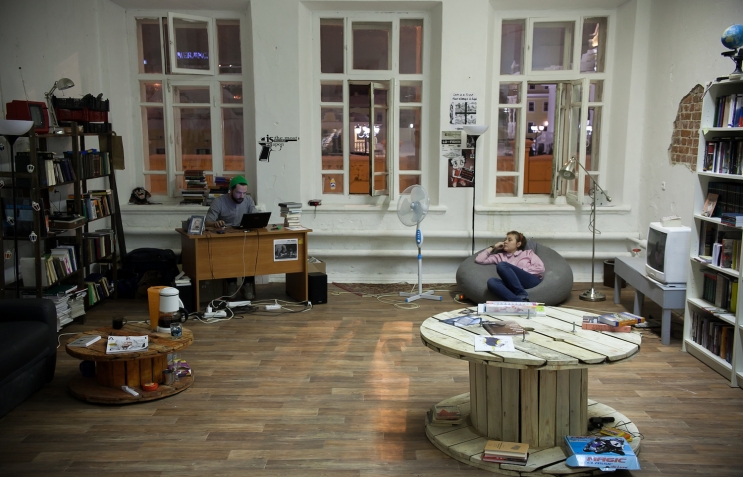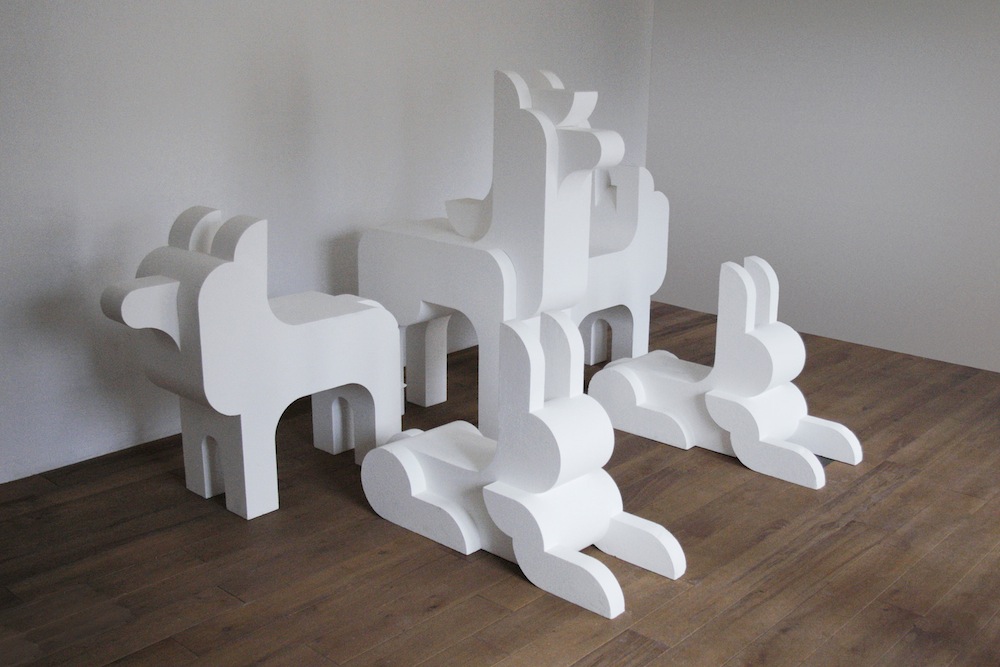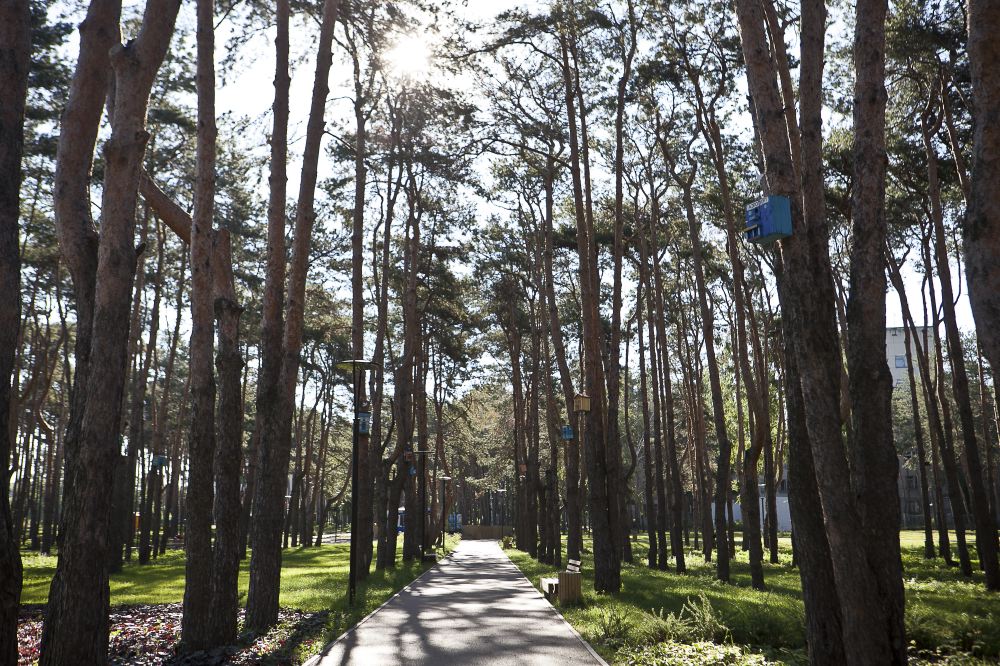Collaboration station: the rise of Russia’s creative hubs

From St Petersburg to Yekaterinburg, young creatives are setting up communal spaces to scheme and dream
In a 19th-century mansion block overlooking the Neva River, just a stone’s throw from the majestic Hermitage Museum, a new art space is providing a home to St Petersburg’s creative talents. Occupants range from bookshops and design studios to a sewing workshop, a hostel and a small radio station. The space also hosts exhibitions and events such as the TEDxNeva River conference in June 2012. Crucially, it’s all done on a non-commercial basis with the emphasis on letting small start-ups establish themselves rather than pulling in a profit for investors.
The man behind the project, graphic designer Mark Kalinin, is proving that commerce and bureaucracy — prevalent forces in Russia — need not be a barrier to creativity. “The project is a type of social experiment,” explains Kalinin. “I’m a designer and I’ve often felt suffocated by the lack of communication between similar professions. I love acquiring knowledge and skills from my fellow peers. This concept of a communal creative space has been a massive success and the people who rent our spaces often collaborate professionally.”
Kalinin’s philosophy is representative of a wider ethos that is in bloom across Russia where the old hierarchies and verticals of power are being replaced by horizontal connections of collaboration and community. In contrast to the country’s more gilded art spaces such as Moscow’s Winzavod, home to a cluster of contemporary art galleries and high-end boutiques, the new crop of creative hubs is decidedly rough-hewn. What sets them even further apart, is a shared spirit of collaboration, for both artistic and social ends.
At Taiga, this sense of cooperation was fostered from the outset with tenants all mucking in to help refurbish the mansion, which was rented to Kalinin at a discount on the condition that he would fix it up. “It was a great challenge for some, but it turned out to have a really positive impact on us,” he says. “When you invest so much time and effort into a building you have a different attitude towards it.” In a somewhat dispiriting twist to the otherwise uplifting Taiga story Kalinin only has use of the building until the owner finds a new buyer.
Pioneering the way in Krasnodar, a city not far from the Black Sea resort of Sochi, where the 2014 Winter Olympics is to be held, is Roof gallery. Based in a working water meter factory in the north of the city, its founder Mikhail Lerner is determined to create a new space for art and collaboration. After studying and then teaching photography for 11 years, Lerner decided to quit and launch Roof.
The community at Roof is small but dedicated. Lerner describes how an initial group of 120 artists was sifted through “a fine-mesh sieve” until only 13 remained. The core includes artists working in different disciplines — photography, architecture, sculpture and illustration — who are all united by their shared artistic passion. “Roof is a mecca for people that have art inside themselves. They know that here their ideas will be accepted, reflected on and then brought to life,” says Lerner.
“I want to educate people so that they will be in demand in creative markets in Russia and worldwide. I guess I’m a bit of a crazy altruistic romantic”
The members of Roof say they value art more than food, sleep or a personal life. Their focus is on creativity not politics and shock tactics. “We’re not against explicit tendencies in ‘modern art’, politicians’ faces with swear words written on them, piles of trash made into something,” he explains. “Maybe someone needs that stuff. But we’re outside of that. We’re different. We want our work to be associated with light and creation, not destruction and politics.”
The emphasis on practicality rather than ideology is crucial. The members run Roof more like a corporation than an idealistic talking shop: they have specially appointed directors, and style, PR and branding specialists. Roof brings people together not only to learn from each other but also to lick ideas into shape and polish them to a high shine before sending them out into the real world.
The outside world also comes to Roof, extending links into the wider population of Krasnodar. As well as making art, Lerner and his friends hold lectures on art history, contemporary culture and photography. They consider education the most important part of their initiative. “I’m ready to do anything to make money, even if it’s selling baked goods, just to get a chance to give free lectures and workshops to people in Krasnodar,” he says. “I want to educate people so that they will be in demand in creative markets in Russia and worldwide. I guess I’m a bit of a crazy altruistic romantic.”
Of course, the gallery itself remains at the heart of his outreach. The opening exhibition in February 2012 showcased the work of around 25 artists and brought several hundred visitors into the gallery. Access to Roof remains tricky as part of the site is still a working factory. But the members of Roof have created a light-filled exhibition area that is inviting for visitors, and with two darkrooms for photography and video work, enticing for practicing artists. The whole ensemble is crowned by an enormous loft space, with eight-metre high ceilings crying out to be used for performances and screenings.
For Lerner, the upcoming Winter Olympics and the Russia-based Football World Cup in 2018 are both large-scale events that are changing the mentality of southern Russia and offering a new opportunity for his space. “Before we used to have this sort of communal, pastoral paradise where some cows in a barn were enough for someone, but now we have all this investment coming in and people are starting to think bigger,” he says. “Soon we will have a huge mass of people who are capable of understanding art and developing themselves. We want to help create a new art scene in the region. And our local heroes should become recognisable all around the world.”

Kleister (pictured above), which opened in October 2012 in Yekaterinburg, is the most recent creative hub to join the fold. The part-bookshop, part-exhibition space is in good company. It shares a building, a former school, with an outpost of Moscow’s National Centre of Contemporary Arts and, until the end of his residency, Yekaterinburg’s most celebrated street artist, Timofei Radya.
Former graphic designer Oleg Lutokhin, who founded Kleister, had long nursed ambitions of opening an independent bookshop in Yekaterinburg, especially after the city’s only one closed down. He took out a loan and with the help of his friends set to renovating the space offered to him by the NCCA. It wasn’t long before the city’s residents thronged to Kleister to buy books, hobnob with other like-minded souls or attend one of the many lectures organised there. “With the opening of Kleister we wanted to create a community in Yekaterinburg and it worked,” he says. “People come over to you, talk to you, exchange contact details and now it’s hard to travel from point A to point B in the city without saying hello to someone ten times.”
According to Lutokhin, others too are looking to tap into the zeitgeist. However, while the ideas for new collaborative spaces are plentiful, the money to back them is not. “There is always a question of finance,” he says. “The scale here is different to Moscow or St Petersburg where art spaces are bigger and more commercial. We have several small spaces and there is lots of potential to open up more art spaces. If we find investors, we’ll be okay. There are certainly enough hard-working and talented people who are part of this wave.”

